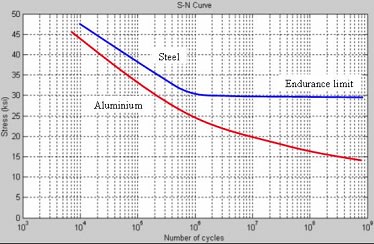LocutusScientific
Mechanical
We are bending a 7" wide, 3/4" thick 2024-T3 aluminum extrusion up by 25 degrees with a 12.5" bend radius. We are concerned that the material will be damaged at the bend due to the high strain, such as from introduction of cracks that will result in fatigue failure in operation. I see a lot of references for minimum bend radius for thin sections but nothing much above 1/2" thick materials. Are there any references or rules of thumb for bending plates this thick?
More fundamentally, what would I look for in terms of a strain limit? A max strain that is some percentage of the published elongation at break?
More fundamentally, what would I look for in terms of a strain limit? A max strain that is some percentage of the published elongation at break?

